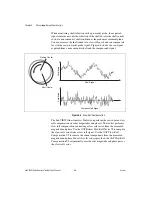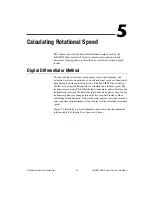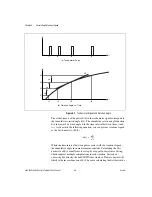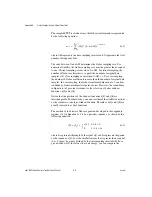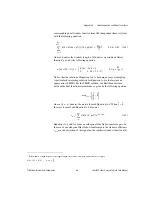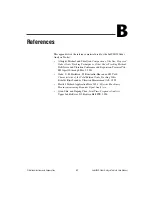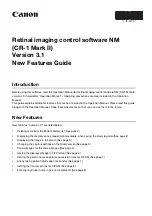
Appendix A
Gabor Expansion and Gabor Transform
LabVIEW Order Analysis Toolset User Manual
A-4
ni.com
Discrete Gabor-Expansion-Based Time-Varying Filter
Initially, discrete Gabor expansion seems to provide a feasible method
for converting an arbitrary signal from the time domain into the joint
time-frequency domain or vice versa. However, discrete Gabor expansion
is effective for converting an arbitrary signal from the time domain into the
joint time-frequency domain or vice versa only in the case of critical
sampling,
∆
M
=
N
. For over sampling, which is the case for most
applications, the Gabor coefficients are the subspace of two-dimensional
functions. In other words, for an arbitrary two-dimensional function, a
corresponding time waveform might not exist. For example, the following
equation represents a modified two-dimensional function.
where
Φ
m
,
n
denotes a binary mask function whose elements are either
0 or 1. Applying the Gabor expansion to the modified two-dimensional
function results in the following equation.
The following inequality results from Gabor expansion.
The Gabor coefficients of the reconstructed time waveform
are not
equal to the selected Gabor coefficients
.
To overcome the problem of the reconstructed time waveform not equaling
the selected Gabor coefficients, use an iterative process. Complete the
following steps to perform the iterative process.
1.
Determine a binary mask matrix for a set of two-dimensional Gabor
coefficients.
2.
Apply the mask to the two-dimensional Gabor coefficients to preserve
desirable coefficients and remove unwanted coefficients.
3.
Compute the Gabor expansion.
c
ˆ
m n
,
Φ
m n
,
c
m n
,
=
s
ˆ
k
[ ]
c
m n
,
n
0
=
N
1
–
∑
m
∑
h k mT
–
[
]
e
j
2
π
nk N
⁄
=
s
ˆ
m
∑
k
[ ]γ
k mT
–
[
]
e
j
2
π
nk
–
N
⁄
c
ˆ
m n
,
≠
s
ˆ
k
[ ]
c
ˆ
m n
,







